Chocolate Pastry Glaze
8925 views| 0 comments
Copyright © 2000 Sarah Phillips CraftyBaking.com All rights reserved.
 Fresh dairy products, like milk, buttermilk, sour cream, cream cheese and yogurt are essential ingredients in baking. But I also use evaporated skimmed milk and instant nonfat dry milk powder to add special character to baked goods. When buying dairy products, check the "Sell By" date and make sure the dairy case is cold. When you open the container, smell the milk first before using. If it smells rancid, soured (except for sour cream and buttermilk), or has mold, toss it. You can substitute ingredients.
Fresh dairy products, like milk, buttermilk, sour cream, cream cheese and yogurt are essential ingredients in baking. But I also use evaporated skimmed milk and instant nonfat dry milk powder to add special character to baked goods. When buying dairy products, check the "Sell By" date and make sure the dairy case is cold. When you open the container, smell the milk first before using. If it smells rancid, soured (except for sour cream and buttermilk), or has mold, toss it. You can substitute ingredients.
SARAH SAYS: DAIRY IS HIGHLY PERISHABLE! Store it properly. Never buy dairy products or eggs that haven't been refrigerated because they are potentially hazardous to consume. Reach back in the refrigerator case to select the coldest dozen you can. Ditto that for butter and dairy products.
BUTTER AND MARGARINE
 BUTTERMILK (CALLED REGULAR OR LOW-FAT):
BUTTERMILK (CALLED REGULAR OR LOW-FAT):
Buttermilk is an absolute must for people who love to bake ! Buttermilk is curdled milk from adding an acidic ingredient to it. The milk used can be low-fat to whole (read the label for the type of milk used).
I have seen buttermilk types called nonfat, low-fat, light and reduced-fat. All are interchangeable in a recipe. Most buttermilk these days is low-fat, but you may still find the regular variety, so be aware of the distinction.
Buttermilk, like yogurt and sour cream, is an acidic ingredient, and helps tenderize the gluten formed in a batter.
In addition to giving baked goods a tender texture, buttermilk also lends a rich tangy flavor. Buttermilk can vary in calories and fat grams according to the type of milk used to make it. Shake the carton before using. I prefer fresh buttermilk to instant buttermilk powder, which reconstitutes into a thin liquid.
Don't confuse buttermilk with "sour milk"; it isn't milk that's gone bad. It's milk which has had a couple of teaspoons of buttermilk stirred into it, has been put in a scalded container and wrapped in a towel, and left in some peaceful corner at about 75 degrees F for 24 hours. The original Irish name is bainne clabhair (BAHN-yeh clavAIR), "clabbered milk", or "bonnyclabber" as the Scots have anglicized it. The flavor isn't quite as tart as buttermilk, but there's enough acid to make the baking soda react correctly.
Buttermilk versus yogurt in baking: I prefer using buttermilk over yogurt because I find the recipe turns out less dense and has a finer grain. I also like its tangy flavor. If you take both and whip them, the buttermilk aerates better because it's thinner. To me, buttermilk is a cross between milk and yogurt -- milk in a recipe gives a tender outcome, more than if you used yogurt.
In low-fat baking, I especially find that the above is true. When there isn't a lot of fat present (so you can cream butter with sugar), the extra aeration from the buttermilk really helps--I can see the difference--after developing hundreds of recipes. CURD: Semi-solid part of milk, produced by souring process. CURDLE: Process which causes fresh milk or a sauce to separate into solids and liquids by overheating or by adding acid, such as in buttermilk.
SARAH SAYS: When I run out of buttermilk, I make my own. When I have leftover fresh buttermilk, I freeze the rest. I measure it in 1/2 cup portions in individual reseable small plastic bags and freeze. When needed, I thaw in refrigerator. Stir well before using.
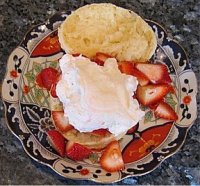 CHANTILLY CREAM: Chantilly cream is whipped cream — but you have to dress up to eat it. The French name is Crème Chantilly. If there’s any distinction between the two, it’s that Chantilly cream is lightly whipped (although plain old whipped cream doesn’t need to be beaten until stiff, either). Under whatever name, it is usually sweetened and can be flavored with vanilla or a liqueur.
CHANTILLY CREAM: Chantilly cream is whipped cream — but you have to dress up to eat it. The French name is Crème Chantilly. If there’s any distinction between the two, it’s that Chantilly cream is lightly whipped (although plain old whipped cream doesn’t need to be beaten until stiff, either). Under whatever name, it is usually sweetened and can be flavored with vanilla or a liqueur.
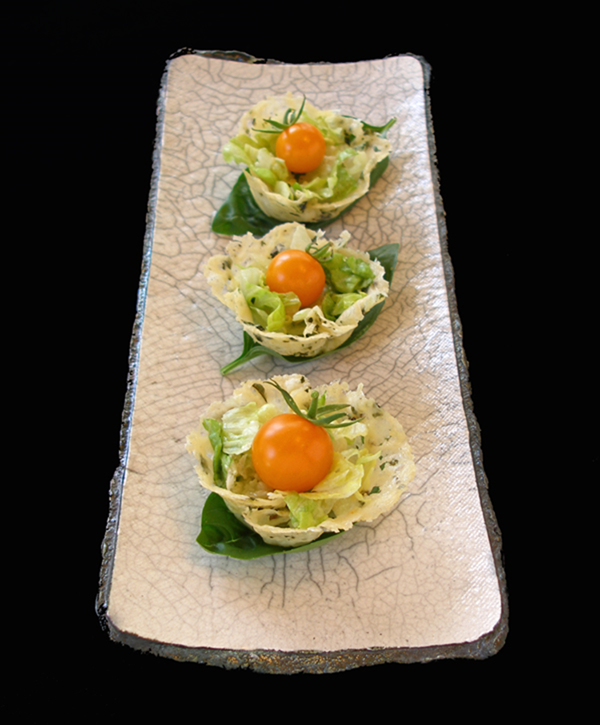
CHEESE: is a generic term for a diverse group of nutritious milk-based food products. Cheese is produced in wide-ranging flavors, textures, and forms. Cheese is made mostly from the milk of cows but also other mammals. Around 4000 years ago people have started to breed animals and process their milk. That's when the cheese was born. There are hundreds of different types of cheese that can be differentiated both by the type of milk - raw, skimmed or pasteurized, and by the animal - cow, goat, sheep, buffalo, horse or camel.
CLABBER (CLABBERED) MILK: is cultured or clabbered into yogurt-like products are pre-digested by the beneficial bacteria that feed on the lactose (milk sugar). Thus, cultured milk products have less lactose, and are less likely to offend the partially lactose-intolerant or allergic person because they are easier to digest. A note from a baker: My grandmother and dad, both native Texans, referred to clabber milk as that milk which had started to thicken (I, city-bred, called it spoiled). They liked to mix it with cornbread in a glass and spoon it out as a treat. Dad also does this with buttermilk, which is certainly not the same as clabber milk.
CLOTTED CREAM: Clotted cream or Devonshire cream is a thick cream made by slowly heating rich, unpasteurized milk to about 82 degrees Centigrade and holding it that temperature for about an hour. A very thick, yellow layer of clots or coagulated clumps of cream forms on the top. It has a minimum fat content of 55 percent. It is a traditional accompaniment to the English 'cream tea,' served with jam and scones.
CREAM: Upon standing, unhomogenized milk naturally separates into two layers — a milk-fat rich cream on top and almost fat-free (or skimmed) milk on the bottom. Commercially, the cream is separated from the milk by centrifugal force. Almost all cream that reaches the market today has been pasteurized.
There are many varieties of cream, all categorized according to the amount of milk fat in the mixture. Many, many supermarkets carry heavy cream. If you can't find, substitute an equal amount of whipping cream for heavy cream. See Whipping Cream, below.
 CREAM CHEESE: Cream cheese is an American invention developed in 1872 in New York state. Cream cheese is similar to French Neufchatel in that it is made from cow's milk, but differs in that it is unripened and often contains emulsifiers to lend firmness and lengthen shelf-life.
CREAM CHEESE: Cream cheese is an American invention developed in 1872 in New York state. Cream cheese is similar to French Neufchatel in that it is made from cow's milk, but differs in that it is unripened and often contains emulsifiers to lend firmness and lengthen shelf-life.
Cream cheese is categorized as a fresh cheese since it is unaged. As a result, it has a short shelf life, once opened. The flavor is mild, fresh-tasting, and sweet, yet has a pleasing slight tang. At room temperature, cream cheese spreads easily and has a smooth and creamy texture. It is sold in foil-wrapped blocks or in a soft-spread form which has air whipped in to make it spreadable right from the refrigerator.
CRÈME FRAICHE: [krehm FRESH] This matured, thickened cream has a slightly tangy, nutty flavor and velvety rich texture. The thickness of crème fraîche can range from that of commercial sour cream to almost as solid as room-temperature margarine.
Crème fraîche and sour cream can be used interchangeably in most recipes, but Crème fraîche has two advantages over sour cream: it can be whipped like whipping cream, and it will not curdle if boiled.
In France, where crème fraîche is a specialty, the cream is unpasteurized and therefore contains the bacteria necessary to thicken it naturally. In America, where all commercial cream is pasteurized, the fermenting agents necessary for crème fraîche can be obtained by adding buttermilk or sour cream.
Crème fraîche is the ideal addition for sauces or soups because it can be boiled without curdling. It's delicious spooned over fresh fruit or other desserts such as warm cobblers or puddings or used in truffle recipes.
Crème fraîche is sold in some gourmet markets. If you can't find it, it's so easy to make an equally delicious crème fraîche version at home.
DEVONSHIRE CREAM: (DEHV-uhn-sheer) - Originally from Devonshire County, England, it is a thick, buttery cream often used as a topping for desserts. It is still a specialty of Devon, Cornwall, and Somerset as this is where the right breed of cattle are raised with a high enough cream content to produce clotted cream. It is also known as Devon cream and clotted cream. Clotted cream has a consistency similar to soft butter.
Before the days of pasteurization, the milk from the cows was left to stand for several hours so that the cream would rise to the top. Then this cream was skimmed and put into big pans. The pans were then floated in trays of constantly boiling water in a process known as scalding. The cream would then become much thicker and develop a golden crust which is similar to butter.
Today however, the cream is extracted by a separator which extracts the cream as it is pumped from the dairy to the holding tank. The separator is a type of centrifuge which extracts the surplus cream at the correct quantity so that the milk will still have enough cream to be classified as milk.
EGGS
FARMER CHEESE: or farmer's cheese or farmers' cheese is a simple cheese made by pressing the moisture from cottage cheese, often used for fillings in blintzes.
GOAT (GOAT'S) MILK: On a worldwide basis, more people drink the milk of goats than any other single animal. In the United States, cow's milk is the norm, but goat's milk is increasing in popularity. Goat's milk has a more easily digestible fat and protein content than cow milk. It is not homogenized.
Goat's milk is used for drinking, cooking and baking. It is used to make cheese, butter, ice cream, yogurt, candy, soap and other body products. It is whiter than whole cow milk. Butter and cheese made from goat milk are white, but may be colored during processing. Due to its small fat globules and soft small curd, products made with goat milk are smooth and cream-like. Goat's milk is also naturally emulsified. Chevre is the French word for goat. Domestically, it is a generic term that applies to all goat cheeses, and more specifically the mild fresh cheeses.
ICE CREAM: Ice cream is often called "The Great American Dessert". Although it is typically American, the U.S. cannot claim its origin. There are literally hundreds of flavors for ice cream, ranging from plain vanilla to rocky road (an extremely rich mix, high in butterfat content and also containing fresh eggs). No matter how many flavors there are, vanilla is still #1!! The most popular topping for ice cream? - chocolate syrup.
LACTOSE-FREE OR LACTOSE-REDUCED MILK: For those who are lactose-intolerant. It's easier to digest.
LONG-LIFE MILK: It can last unopened in your cupboard without any refrigeration for at least six months and is available from the supermarket. (Once it has been opened, it must be refrigerated.) The only brand name for non-flavored milk I've seen is Parmalat. I always keep a box in my pantry for times when I run out of milk and can't run to the grocery store. Parmalat is great to use when making yogurt. Several companies sell flavored milks (chocolate, etc.) in this packaging, usually in the smaller single-serving sizes.
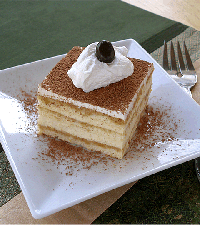 MASCARPONE CHEESE: AIn fact, it is not cheese at all, but rather the result of a culture being added to the cream skimmed off the milk, used in the production of Parmesan from the Lombardy region of southern Italy. It is, however, described as a soft, white, curd cheese, although it is made in much the same way as yogurt, but it turns out creamy, mild and compact, but supple and spreadable. It is added to Italian desserts and frequently it is used for the preparation of certain dishes and sauces. It has a fat content of 75 per cent.
MASCARPONE CHEESE: AIn fact, it is not cheese at all, but rather the result of a culture being added to the cream skimmed off the milk, used in the production of Parmesan from the Lombardy region of southern Italy. It is, however, described as a soft, white, curd cheese, although it is made in much the same way as yogurt, but it turns out creamy, mild and compact, but supple and spreadable. It is added to Italian desserts and frequently it is used for the preparation of certain dishes and sauces. It has a fat content of 75 per cent.
MILK (COW'S, SOY, AND NUT): Cow's milk is a complex fluid consisting of seven main components: water, fat, protein, sugar (lactose), minerals, vitamins and enzymes. It could also be described as a true aqueous solution of lactose, salts and a few other minor compounds, which is emulsified with fat and supports a colloidal dispersion of proteins. The opacity of milk is due to its content of suspended particles of fat, proteins and certain minerals. The color varies from white to yellow according to the coloration (carotene content) of the fat. Skimmed milk is more transparent with a slightly bluish tinge. Milk of a good flavor has a pleasant, slightly sweet taste, and no odor. It is an excellent source of calcium, phosphates and riboflavin. Vitamin A and D are currently added to whole milk, partly skimmed and skimmed milk.
The major components of cow's milk, i.e. water, fat, proteins and lactose are probably of greatest importance since most of the functional properties reside with these individual components. Its proteins (as do eggs and flour) that set or coagulate from the oven's heat and form the structure of the cake. Proteins bind/entrap water, form a stable film and proteins set when baked. Proteins stabilize fat emulsions and the lactose undergoes caramelization reaction or helps with browning.
Depending upon the butterfat content, cow's milk will contribute fat and milk proteins to a recipe. In order of the highest fat content to the lowest, there is whole milk, reduced-fat (2 %) milk, lowfat (1%) milk, and nonfat (skim) milk. I recommend going no lower than 2 percent milk in your recipes, even if baking low-fat ones. The higher the fat content in the milk, the more it will enhance the baked good's flavor, so be aware when you substitute a higher one for a lower-in-fat one. Technically, you could make skim milk by adding enough water to whole milk, this is not permitted in US dairy plants.
Soy Milk: Soy milk is made by grinding soaked soybeans with water, adding a sweetener or flavoring, and sometimes a thickener to create a mouthfeel similar to cow's milk. Many brands are fortified with calcium. For baking, it is the best substitute to use for cow's milk because it has similar properties.
| 1 cup | calories | fat (g) | chol (mg) | calcium(mg) |
| skim | 86 | 0 | 5 | 302 |
| 1% | 100 | 2.5 | 10 | 300 |
| 2% | 120 | 5 | 20 | 297 |
| whole | 150 | 8 | 35 | 291 |
| soy (light) | 100 | 2 | 0 | 80 |
| soy | 140 | 4 | 0 | 80 |
QUESTION: I wanted to know if I can use 2% milk in any recipe that calls for milk or does whole milk make a difference?
SARAH SAYS: With our recipes, we let you know when you can use whole or 2% milk!
Generally, when a recipe calls for milk, you can use whole or 2%.
QUESTION: How long after the "sell-by date" can you keep milk?
SARAH SAYS: If milk is properly cared for, it generally stays fresh for 2 to 3 days after this date. Following are some tips to properly care for milk:
Nut Milks: Almond or hazelnut milk contains a significant amount of protein and flavor, while coconut milk has a richer, more intense flavor. These milks will work as a substitute for cow's milk in baking, however soy milk works the best.
Milk Tips:
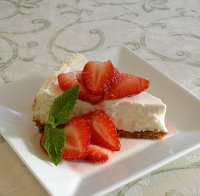 NEUFCHATEL CREAM CHEESE: is very similar to Cream Cheese, but it has a lower fat content and slightly firmer texture.
NEUFCHATEL CREAM CHEESE: is very similar to Cream Cheese, but it has a lower fat content and slightly firmer texture.
RAW MILK (unpasteurized): Is not recommended because it can spread diseases such as salmonella and tuberculosis.
RICE MILK: Rice milk is a type of grain milk processed typically from brown rice. It is unsweetened, though it may be sweetened by adding sugar syrup.
RICOTTA: Traditional, creamery, whey cheese made from cow's milk. Good Ricotta should be firm, not solid and is white, creamy and mild. It is primarily used as an ingredient in lasagna.
SOUR CREAM: Sour cream, like buttermilk and yogurt, is an acidic ingredient, and helps tenderize the gluten formed in a batter, giving a tender texture. It also lends a rich tangy flavor. I prefer it over yogurt when baking cakes; it gives a nice, dense and moist texture.
Commercial sour cream contains from 18 to 20 percent fat, and has been treated with a lactic acid culture to add its characteristic tang. Sour cream often contains additional ingredients such as gelatin, rennin and vegetable enzymes. Sour cream comes with varying amounts of fat:
The full fat version has 5 grams of fat per 2 tablespoons. Of this 3.5 grams are saturated. Total calories are 60 with 50 of them coming from fat.
Reduced or lowered fat sour cream has only 3.5 grams of fat in 2 tablespoons (2.5 saturated). Each serving is 45 calories. If you want to reduce the fat, I recommend this variety instead of nonfat, because the fat content and acidity differ between the two. The taste and texture will be better.
The nonfat or fat free sour cream is just that. Most of the calories are from carbohydrates.
The regular and reduced fat can be used in cooking but even at moderate temperatures the fat free sour cream will separate. When adding it cool the sauce first and add the sour cream reheating gently or temper the sour cream first.
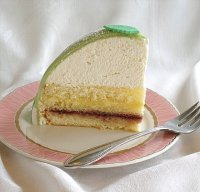 WHIPPING CREAM: Heavy cream is the richest type of liquid cream with a fat content of at least 36%, while whipping cream contains between 30% and 36% fat. For whipping, you need a minimum of 30% fat.
WHIPPING CREAM: Heavy cream is the richest type of liquid cream with a fat content of at least 36%, while whipping cream contains between 30% and 36% fat. For whipping, you need a minimum of 30% fat.
Whipping cream and heavy whipping cream can be substituted for the other, but the higher the fat content, the higher and firmer the cream will whip up. This will give you a thicker and more stable frosting perfect for piping through a pastry bag.
While both whipping cream and heavy cream whip up quickly, I did discover that whipped cream made with whipping cream was softer, more voluminous (25% to 30% more), and more enjoyable spooned on top of desserts.
The science of whipping cream: When cream is beaten air cells form more slowly partly because of higher viscosity and partly because the presence of fat causes immediate collapse of most of the larger bubbles. if most of the fat is liquid (high temperature) the fat globule membrane is not readily punctured and churning does not occur -at cold temperature where solid fat is present, churning (clumping) of the fat globule takes place. Clumps of globules begin to associate with air bubbles so that a network of air bubbles and fat clumps and globules form entrapping all the liquid and producing a stable foam. if beating continues the fat clumps increase in size until they become too large and too few to enclose the air cells, hence air bubbles coalesce, the foam begins to "leak" and ultimately butter and butter milk remain
SARAH SAYS: Pasteurized whipping cream separates on freezing, but the new ultra-pasteurized cream freezes well. Check the label. Pasteurized whipping cream can be whipped and frozen. Place dollops of whipped cream on a cookie sheet, freeze, remove from the cookie sheet and store in moisture-vapor-proof freezer bags.
| Type | Percent milkfat |
| BEST CHOICE FOR WHIPPING: Heavy whipping or heavy cream NOT ultrapasteurized. It's usually only available in specialty or gourmet markets. Whipping cream will double in volume when whipped. (Sweet heavy cream = heavy whipping cream). Most cream is not homogenized (not to be confused with pasteurized), making it easy to whip. | 36 to 40% |
| Ultrapasteurized cream, seen more and more in markets today because it has a longer shelf life than pasteurized whipping cream does. Ultrapastuerized means that the cream has been briefly heated at temperatures up to 300 degrees F to kill microorganisms that cause milk products to sour and also keeps the milk fat evenly dispersed, called homogenized. It takes longer to whip and it has a slight "cooked" flavor, as a result, but will stay whipped longer (it won't separate as easily). But, if that's all you can find, then it's ok to use. | 36 to 40% |
| Whipping cream, also known as light whipping cream | 30 to 36% |
| "Light cream", also called coffee or table cream will whip, but it won't trap as much air or hold it very well | Anywhere from 18 to 30%, but commonly contains 20% |
| Lightest of all is Half and Half, which is half milk, half cream. It can't be whipped, but it's nice with coffee, or on cereal. | Between 10 - 12% |
| Clotted cream or Devonshire (British) | 55% |
| Double cream is the British designation for super-rich cream | 48% |
| Light cream or single cream (British) | average around 20% |
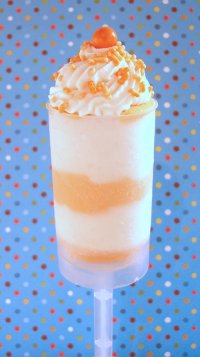 YOGURT: Curdled milk which has been treated with harmless bacteria. In the Middle East it is served as a sauce with meat, fish and vegetables; in Europe mainly with or in desserts; in American primarily a breakfast or snack with fruit or fruit flavorings. I prefer organic, acidophilus brands like Stonyfield Farms, without stabilizers or gelatin. Fruit-flavored yogurts can be used to flavor baked goods. Nonfat yogurt or low-fat yogurt are okay to bake with besides the regular variety.
YOGURT: Curdled milk which has been treated with harmless bacteria. In the Middle East it is served as a sauce with meat, fish and vegetables; in Europe mainly with or in desserts; in American primarily a breakfast or snack with fruit or fruit flavorings. I prefer organic, acidophilus brands like Stonyfield Farms, without stabilizers or gelatin. Fruit-flavored yogurts can be used to flavor baked goods. Nonfat yogurt or low-fat yogurt are okay to bake with besides the regular variety.
Greek Yogurt is strained more to remove much of the liquid whey, lactose and sugar, giving it a creamy, thick texture. It is rich in protein, calcium, and probiotics, and lower in sugar, making a great lower-calorie substitute for ice cream.
YOGURT CHEESE: is made by draining the whey from the yogurt with the result being a thick yogurt you can bake with. Line a wire strainer with paper towels or cheesecloth, and place over a deep, medium size bowl. Be sure the bottom of the strainer clears the bottom of the bowl by 2 or 3 inches. Spoon 4 cups (one 32-ounce container) plain yogurt into the strainer and place a paper towel or more cheesecloth on top. Place a saucer or small plate in the strainer to lightly weigh the yogurt.
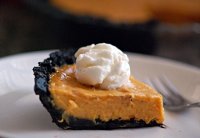 Let stand in the refrigerator until about two cups of the whey has drained off, and the yogurt is thick and somewhat firm, about one and half hours. (There are also yogurt cheese making contraptions that are available at kitchenware shops.) If you hate to dsicard the tangy whey, some frugal cooks use it in soups - but do not use it as a substitute for the liquids in a baked recipe. If you're not in a hurry, do not weigh the yogurt with the saucer, and refrigerate the whole setup overnight to slowly drain the weigh.
Let stand in the refrigerator until about two cups of the whey has drained off, and the yogurt is thick and somewhat firm, about one and half hours. (There are also yogurt cheese making contraptions that are available at kitchenware shops.) If you hate to dsicard the tangy whey, some frugal cooks use it in soups - but do not use it as a substitute for the liquids in a baked recipe. If you're not in a hurry, do not weigh the yogurt with the saucer, and refrigerate the whole setup overnight to slowly drain the weigh.
The yogurt cheese will yield about half the volume of the undrained yogurt; for example, four cups of yogurt (one thirty-two ounce container) will yield about two cups of yogurt cheese.
CANNED MILKS: These are commonly called UHT milks (Ultra High Temperature) for the packaging technique used to put them up. Both evaporated and sweetened condensed milks are made by removing about half the water from fresh milk, but sweetened condensed milk has sugar added while evaporated milk does not. They cannot be substituted for one another. Unopened cans of evaporated milk can be stored on a cool, dry shelf for up to six months. Canned milk (UHT) should be stored till the stamped date code on the package (3 - 6 months). Check the date on sweetened, condensed milk for maximum storage.
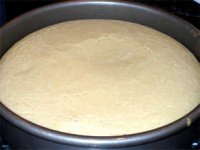 DRY MILKS: Nonfat dry milk is a product that is created when water is removed from pasteurized nonfat milk. By depriving microorganisms of the water which they require in order to develop, drying allows skim milk powder to have a shelf life of up to 3 years if stored properly. It contains lactose, milk proteins and minerals in the same relative proportions as the fresh milk from which it was made. Skim milk powder is by far the most common type of milk powder available.
DRY MILKS: Nonfat dry milk is a product that is created when water is removed from pasteurized nonfat milk. By depriving microorganisms of the water which they require in order to develop, drying allows skim milk powder to have a shelf life of up to 3 years if stored properly. It contains lactose, milk proteins and minerals in the same relative proportions as the fresh milk from which it was made. Skim milk powder is by far the most common type of milk powder available.
Try to buy your dried milk in containers of a size that makes sense for the level of consumption in the household. Once it is opened, powdered milk has to be stored properly to last. If you buy large packages and do not use much at one time, consider breaking it down and repackaging into smaller containers at the time of purchase.
Dry Milk Storage: OPENED dry milk products are especially sensitive to storage conditions. The powder should be stored under cool, dry conditions and should be protected from contact with water or light. Airtight and opaque colored containers are the best place to store it in. With its low moisture content, its nutritive value is not affected, even after years of storage.
If the bulk dry milk purchased was not packaged for long term storage then it should be repackaged right away. It's important to remember the containers should be clean and odor-free.
The method I now use is to pour the powder into clean, dry half-gallon glass canning jars. Glass has the advantage of not holding odors, thus allowing for reuse after suitable cleaning. Once the jars are filled I add a small desiccant pack and seal. They are dated and stored in a cool, dark place. Since they are as transparent the contents must be protected against light. Vacuum sealing and then storing in a dark place may be the best method. Larger jars of 1 gallon size could be used and then re-vacuum sealed after each use.
Clean, sound plastic one and two liter soda bottles can also be used, but probably should be used just once since the plastic is somewhat permeable and will hold odors.
8925 views| 0 comments
29749 views| 105 comments
34355 views| 51 comments